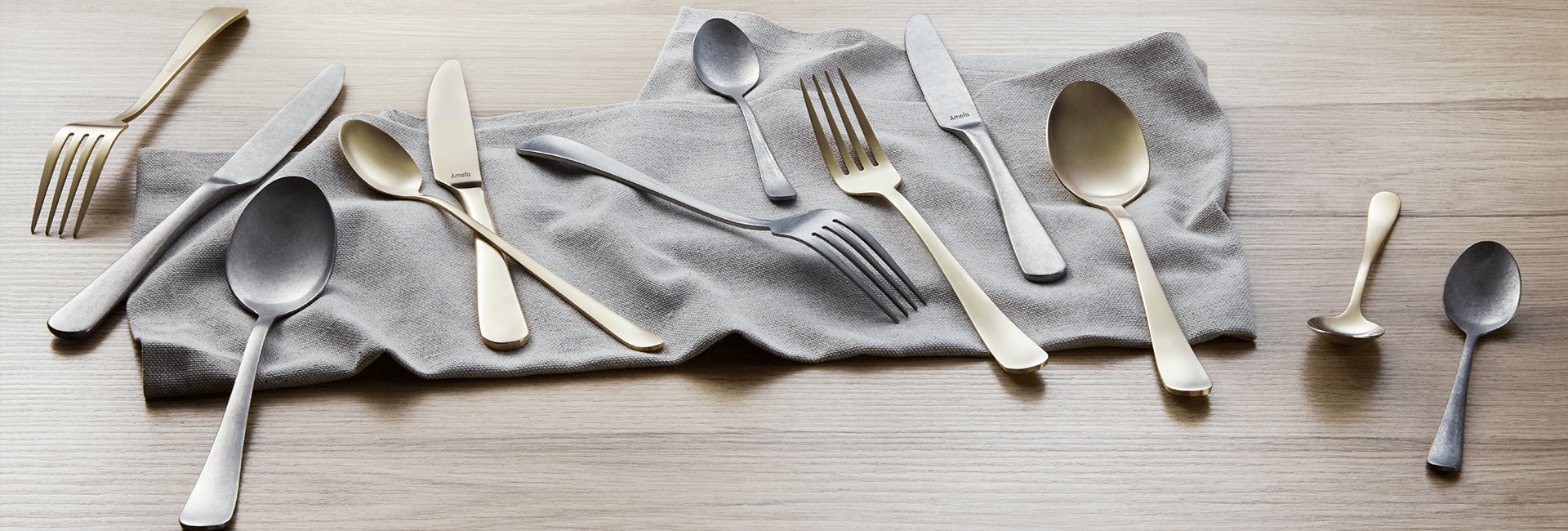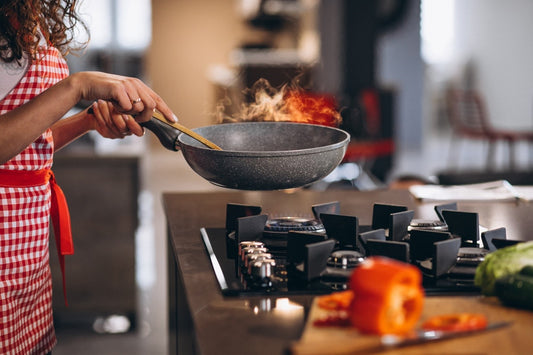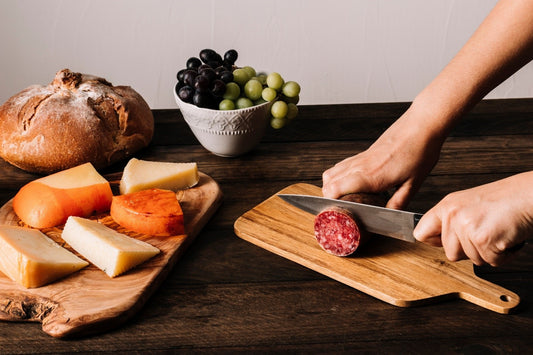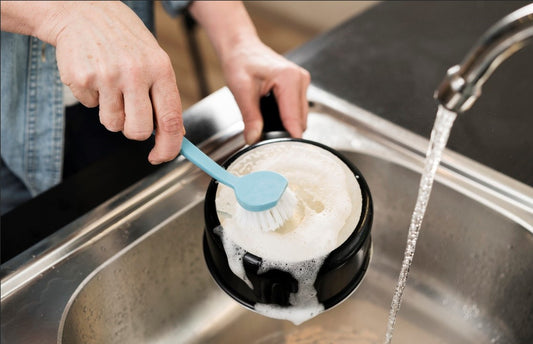
An essential component of any well stocked kitchen is the cutlery therefore it becomes crucial to take good care of your cutlery sets. Like any other tool your cutlery requires proper care and maintenance to ensure that it continues to perform at its best.
In this guide, we'll look at some of the best practices for cleaning and maintaining your kitchen cutlery. We'll cover everything from basic cleaning techniques to advanced care tips for cutlery sets.

Handwashing:
Handwashing is the gentlest approach to care of your cutlery. Avoid using scouring pads, aggressive chlorine detergents / cleaning products. Instead use non-abrasive sponge or cloth and wash your cutlery by hand with warm, soapy water. Avoid prolonged exposure to certain consumables such as salts, eggs, vinegar, tomato and food acids as it can damage your cutlery.
Don’t leave your cutlery soaking overnight and after washing your cutlery, be sure to dry it thoroughly with a clean towel. Leaving your cutlery wet can cause it to develop rust or other forms of corrosion.
Dishwashing:
All 18/0 and 18-10 stainless steel cutlery is dishwasher safe, unless specified otherwise. We recommend following the below instructions to keep your cutlery in optimum conditions.
Always rinse your cutlery before putting it in the dishwasher to remove any food.
Avoid using salt, vinegar, bleach and aggressive cleaning products, as they can corrode the cutlery.
Knives are constructed from different grade of steel (13/0 stainless steel) than spoons and forks (18-10 or 18/0 stainless steel) therefore contact between such steels may result in contact corrosion. Hence it is recommended to keep the knives apart from the spoons and forks in the cutlery basket to avoid contact corrosion.
To avoid condensation on the cutlery, open the dishwasher door once the rinse cycle is complete.
Rather of keeping your cutlery sets in a moist environment overnight, remove it soon as the cycle ends and dry it with a soft towel.

Caring for Coloured Cutlery:
Cutlery is comprised of 18% (18/0) stainless steel and is suitable for use with food. Coloured-PVD (Physical Vapour Deposition) cutlery often has a thin titanium coating that provides a bright colour. The care and recommendations for coloured PVD cutlery (gold/champagne/copper/black) differ significantly from those for stainless steel cutlery.
Handwashing:
Handwashing is preferable and recommended to keep the shine. Avoid using abrasive pads, bleach detergents and the use of sodium.
Prolonged exposure to salts and food acids causes damage, so it’s advised to rinse or wash your cutlery immediately after use.
Avoid leaving your cutlery soaking. After washing, immediately dry with a soft cloth towel.
Dishwashing:
Dishwashing although not recommended is possible when taking into consideration the following steps.
Dishwashing setting of low temperature (40ºC or less) is recommended. Check to see whether your dishwasher has an eco-friendly setting; most of these settings have a low temperature of 40ºC or less.
Prolonged contact to salts and food acids (e.g., mayonnaise, vinegar, mustard) causes damage, therefore rinse immediately before placing the pieces in the dishwasher.
Do not wash your coloured cutlery with cutlery, knives or utensils of a lower steel quality as chemical reactions will mark the steel.
When the cycle is done, remove the pieces from the dishwasher and towel dry your cutlery to prevent stains. Do not leave your cutlery to cool. To maintain the shine, wipe away any wet stains with a soft cloth.
Dry your cutlery thoroughly:
Don’t leave your cutlery soaking overnight and after washing your cutlery, be sure to dry it thoroughly with a clean, soft towel. Leaving your cutlery wet can cause it to develop rust or other forms of corrosion.

Store your cutlery properly:
When storing your cutlery, be sure to keep it in a dry, well-ventilated area. Avoid storing your cutlery in a damp or humid location, as this can also cause it to develop rust / corrosion.
Store your cutlery:
To prevent your premium cutlery from becoming scratched or damaged, consider storing it in a protective case. A cutlery organiser is also essential to store your cutlery. If your utensils are stored in a drawer without an organizer, they can knock against each other, causing scratches or other damages and having a cutlery organizer helps separating your cutlery and protect your utensils from damage.
In addition to these tips, it's also important to remember that different types of cutlery may require different care and maintenance techniques. For example, if you own a set of serrated knives, you may need to sharpen them more frequently than other types of knives.
In conclusion, maintaining your kitchen cutlery is an important part of keeping your kitchen running smoothly. By following the tips outlined in this guide, you can keep your cutlery clean, shiny, and in top condition for years to come.




